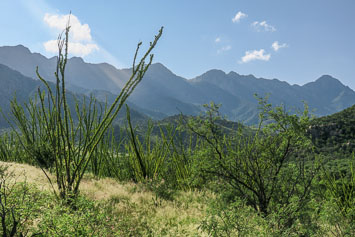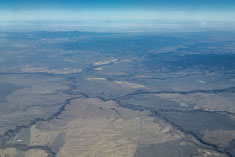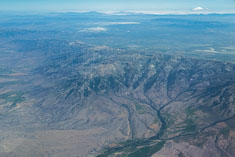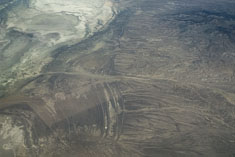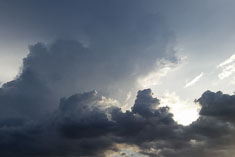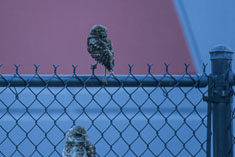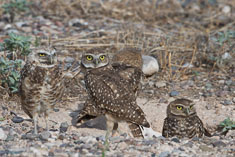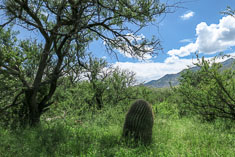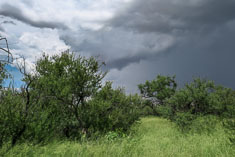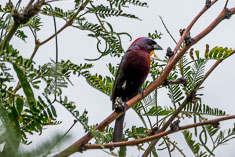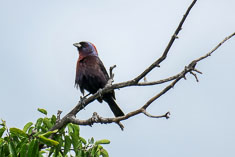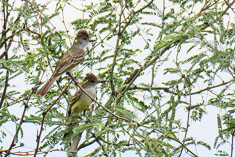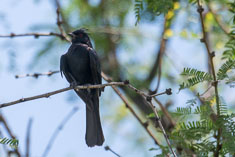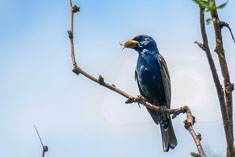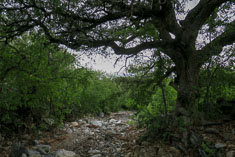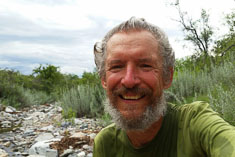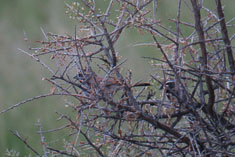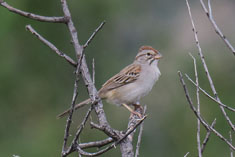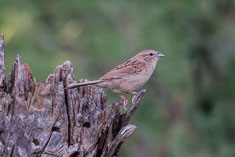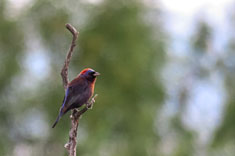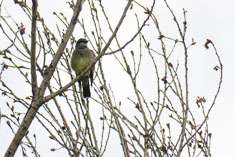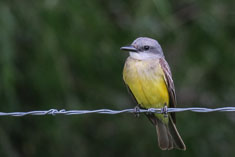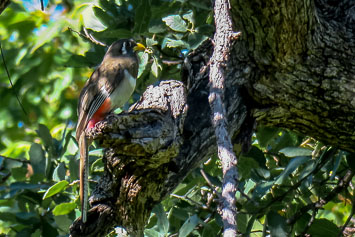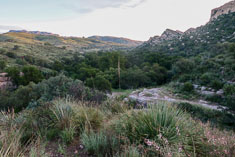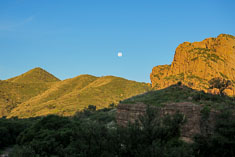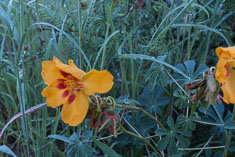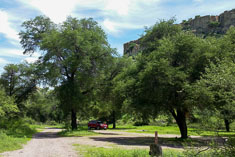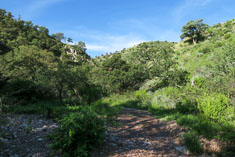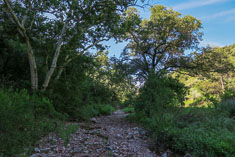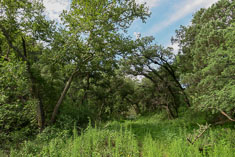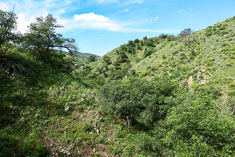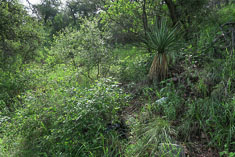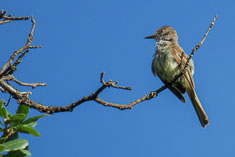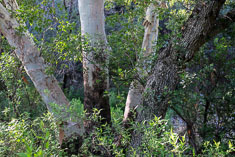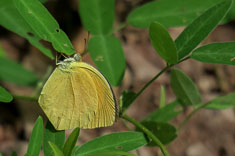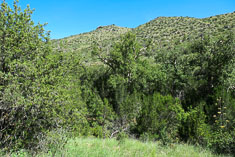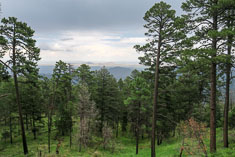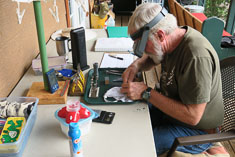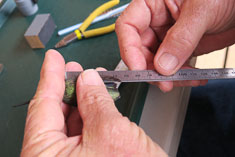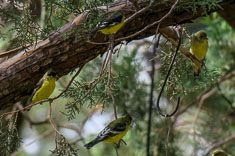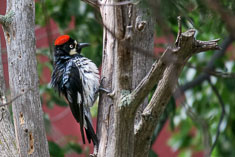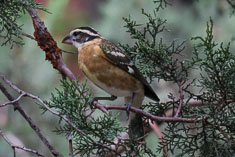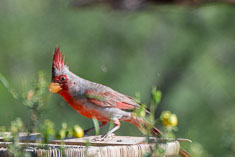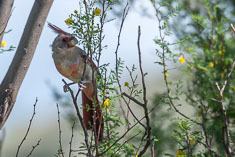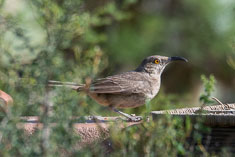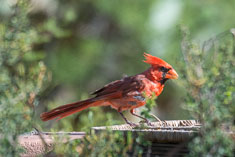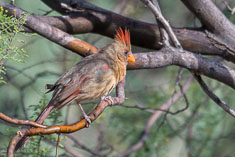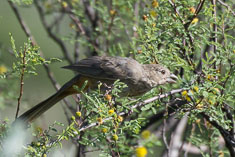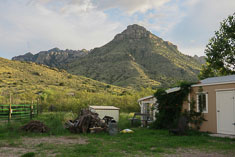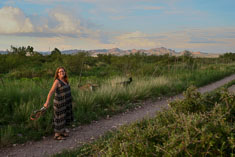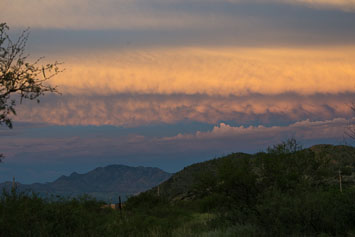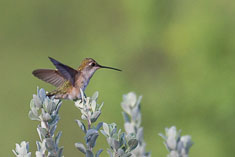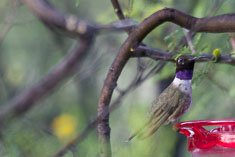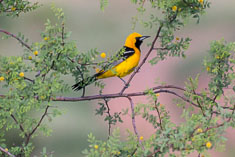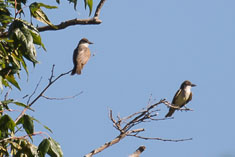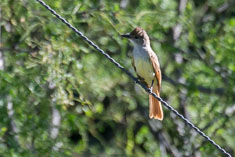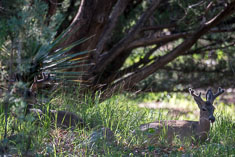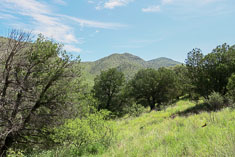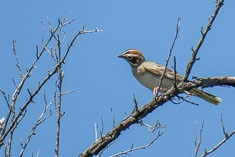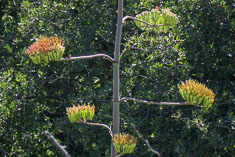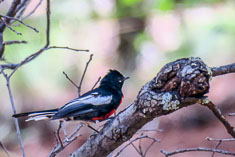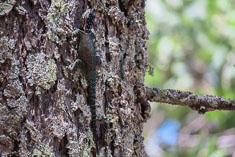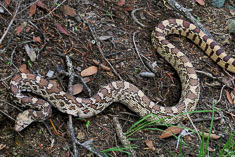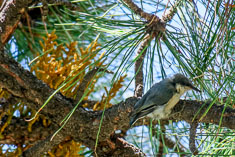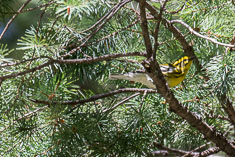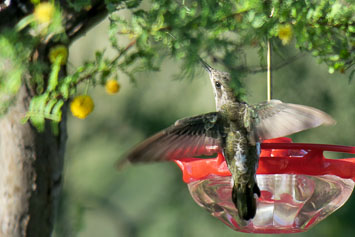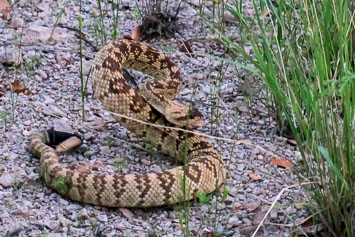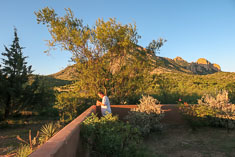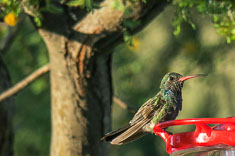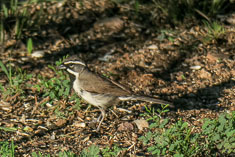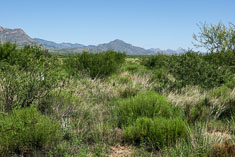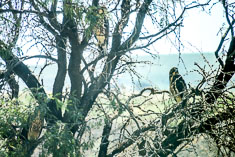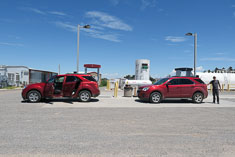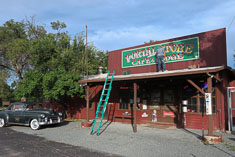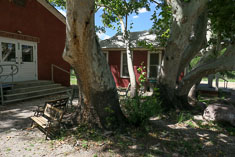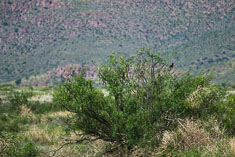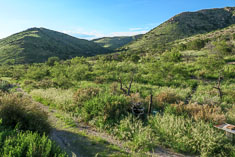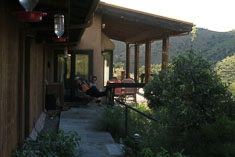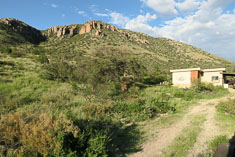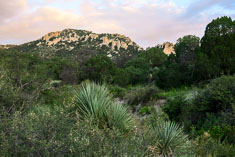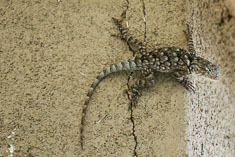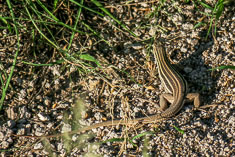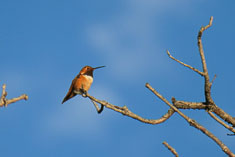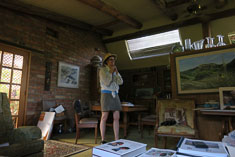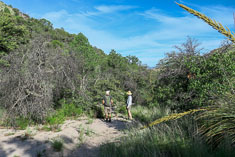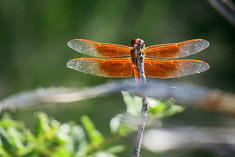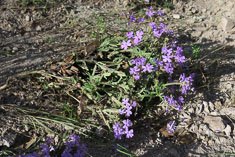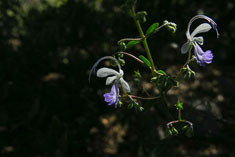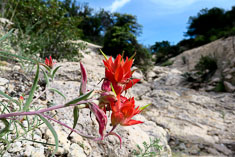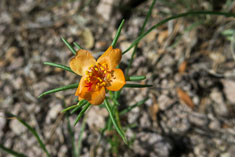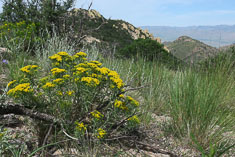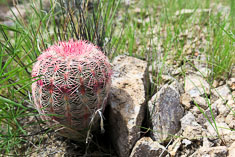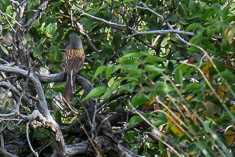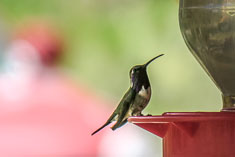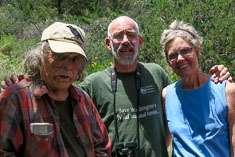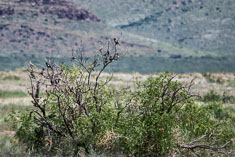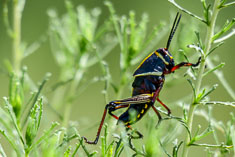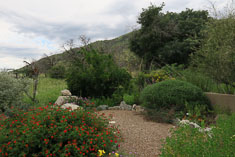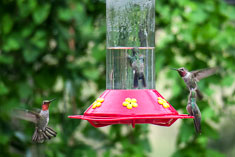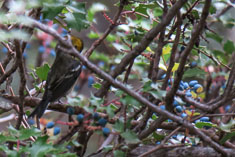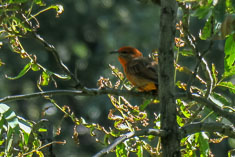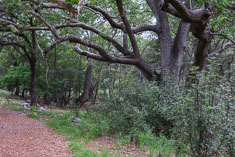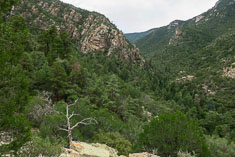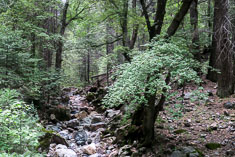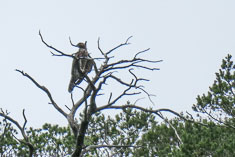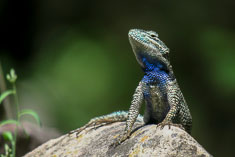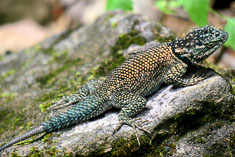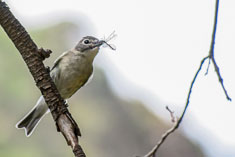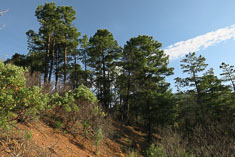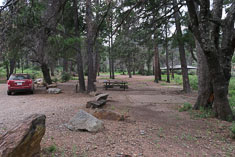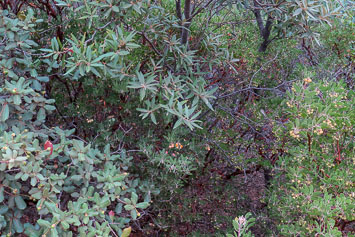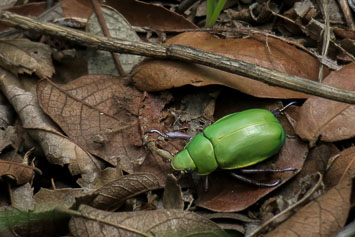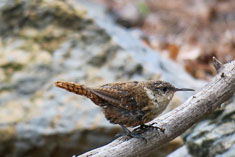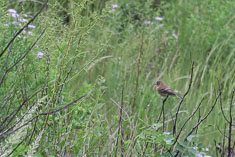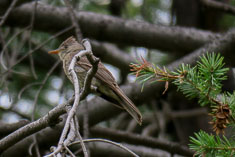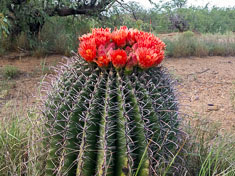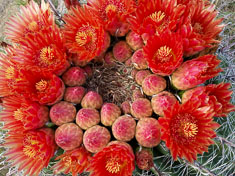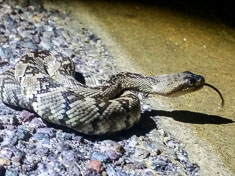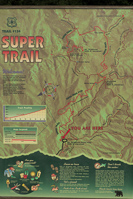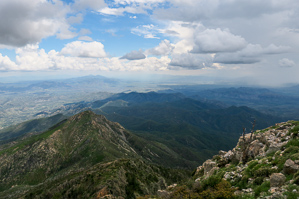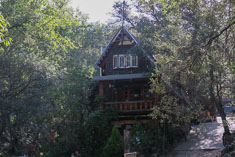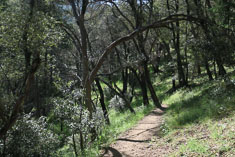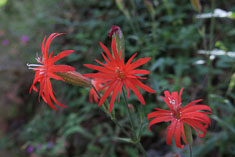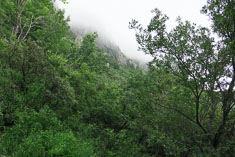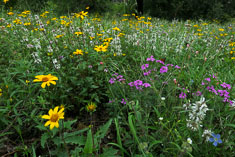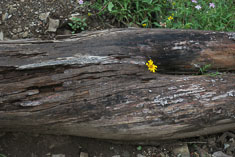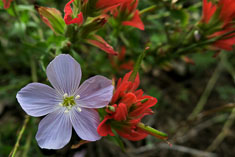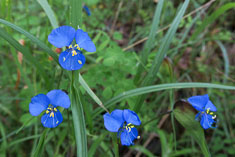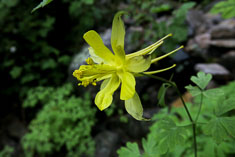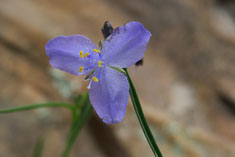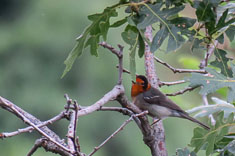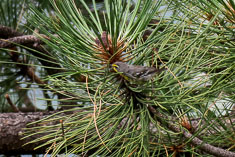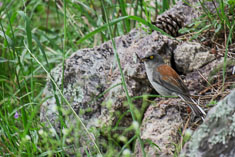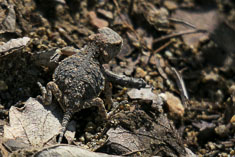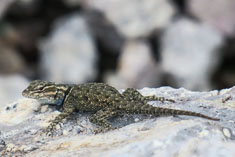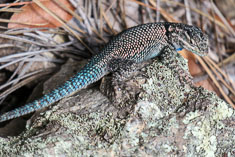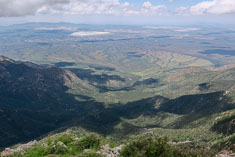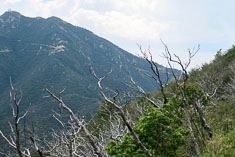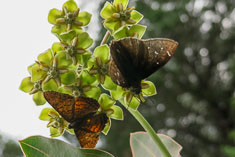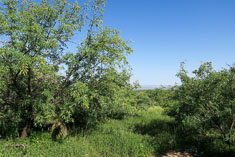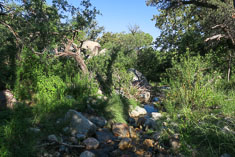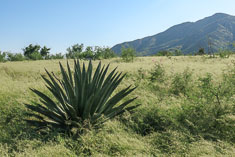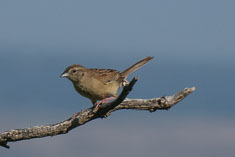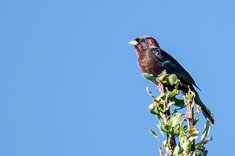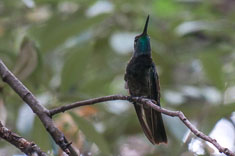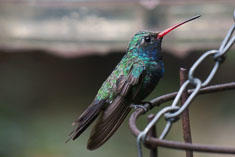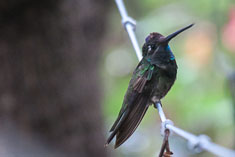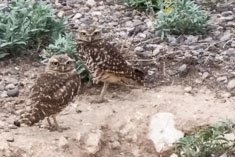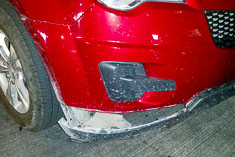Emboldened by the trip to Big Bend with John and motivated by the
knowledge that after the next few weeks I will never again be able to photograph birds that don't
winter in the US, I decided to make a trip to southeastern Arizona. Ed and Delia would be going
down the first week of August and I could fly with them if I needed assistance. Most of the Arizona
specialties including Varied Buntings were still being reported regularly on eBird so I would have
opportunities to see and photograph them. Since I missed Varied Buntings in Big Bend, they were my
primary objective.
Why Arizona? There is a symmetry about it. 31 years ago in May 1984, I spent a month in southeastern Arizona birdwatching and helping Dave Sawyer with geologic fieldwork. I recall a mostly idyllic time of exploring the desert and mountain canyons and discovering birds that I had never before seen except in the bird book. It was my last trip before embarking on the work of becoming an adult.
That work - getting a job and finding a place to live, taking on responsibilities of family, work and church - I did, all under Susan's exhortation and tutelage. With her help, I did grow up. I gained a job and career and a wife and family and took my place in church and society but in so doing I lost something that was represented by that trip in Arizona. I'm still not sure exactly what it was that I lost because I did continue to hike and birdwatch and even to explore some, and of course growing up was itself an exploration, at least at first. Over time though, everything that I did as a responsible adult - work, church and family - all became prisons in which I was not good and from which I could not escape. Perhaps it was my courage that I lost, courage to act on my own behalf, to chart my own course and to believe in my own worth.
In the course of the changes of the past few years, culminating with the diagnosis of ALS two years ago, I have rediscovered the courage to seek what I want and to act on my own behalf. And among the things I realized that I wanted to do is to go back to Arizona and explore the desert again, to reacquaint myself with the birds and plants and lizards and mountains and photograph them while I still can. And the time for that is now because the birds are heading south in a few weeks and by the time they return ALS will have robbed me of the ability to hold a camera or tie my shoes or drive a car or pull up my pants or even pick my nose. This is my last chance, a last trip again, only this time my last trip as a (more-or-less) self-sufficient adult.
Postscript (a year later):
It was my last solo birding trip. I haven't slept out under the stars again since that night in Peña Blanca canyon. I haven't been able to drive for several months. I don't know how long it's been since I was able to tie my shoes or do up a snap or button on my pants. I'm still using the Canon G3X camera that I bought for the trip to Arizona, but that trip was the last time I was able to use the Nikon with the 80-400 zoom. And last but not least I can still pick my nose, though only just barely and I have to lean over and brace my wrist on my knee to do it.
More importantly I am still doing birding trips, only now I go with friends. Ed and I spent a week in South Texas last November. Last May I did a three day cruise from LA to Vancouver and a quick trip to Indiana in addition to numerous local birding trips. Not to deny that my days are numbered. Odds are I have at most two years of active life left followed by a year or two in a wheelchair on breathing support. I'll keep you posted.
Why Arizona? There is a symmetry about it. 31 years ago in May 1984, I spent a month in southeastern Arizona birdwatching and helping Dave Sawyer with geologic fieldwork. I recall a mostly idyllic time of exploring the desert and mountain canyons and discovering birds that I had never before seen except in the bird book. It was my last trip before embarking on the work of becoming an adult.
That work - getting a job and finding a place to live, taking on responsibilities of family, work and church - I did, all under Susan's exhortation and tutelage. With her help, I did grow up. I gained a job and career and a wife and family and took my place in church and society but in so doing I lost something that was represented by that trip in Arizona. I'm still not sure exactly what it was that I lost because I did continue to hike and birdwatch and even to explore some, and of course growing up was itself an exploration, at least at first. Over time though, everything that I did as a responsible adult - work, church and family - all became prisons in which I was not good and from which I could not escape. Perhaps it was my courage that I lost, courage to act on my own behalf, to chart my own course and to believe in my own worth.
In the course of the changes of the past few years, culminating with the diagnosis of ALS two years ago, I have rediscovered the courage to seek what I want and to act on my own behalf. And among the things I realized that I wanted to do is to go back to Arizona and explore the desert again, to reacquaint myself with the birds and plants and lizards and mountains and photograph them while I still can. And the time for that is now because the birds are heading south in a few weeks and by the time they return ALS will have robbed me of the ability to hold a camera or tie my shoes or drive a car or pull up my pants or even pick my nose. This is my last chance, a last trip again, only this time my last trip as a (more-or-less) self-sufficient adult.
Postscript (a year later):
It was my last solo birding trip. I haven't slept out under the stars again since that night in Peña Blanca canyon. I haven't been able to drive for several months. I don't know how long it's been since I was able to tie my shoes or do up a snap or button on my pants. I'm still using the Canon G3X camera that I bought for the trip to Arizona, but that trip was the last time I was able to use the Nikon with the 80-400 zoom. And last but not least I can still pick my nose, though only just barely and I have to lean over and brace my wrist on my knee to do it.
More importantly I am still doing birding trips, only now I go with friends. Ed and I spent a week in South Texas last November. Last May I did a three day cruise from LA to Vancouver and a quick trip to Indiana in addition to numerous local birding trips. Not to deny that my days are numbered. Odds are I have at most two years of active life left followed by a year or two in a wheelchair on breathing support. I'll keep you posted.
7/30/2015 SE Arizona day 0 - Tucson
Although I had no trouble on the flight or picking up the rental car, I felt very anxious nonetheless. I checked into my room at the La Quinta Inn and drove east across the south side of town to a Walmart that I'd found on my phone. I spotted a Goodwill in the same shopping center so I went in there first to look for an electric kettle. The only one I found didn't appear to have a power cord so I went over to Walmart and bought the same model for twice as much and discovered that the power cord was inside the pot.
I had brought some good coffee and a cone filter so that whenever I was in a motel I could fix myself a good cup of coffee in the morning. I don't think of myself as a coffee drinker and so it seemed a little silly to go to the trouble of getting a kettle and making my own coffee instead of drinking the stuff in the motel lobby. But this is my trip, I reasoned, and I enjoy good coffee so why not. John fixed coffee every morning in Big Bend and I think I found some comfort in the prospect of doing likewise.
By the time I finished shopping and packing all my food into a cooler out in the middle of the hot Walmart parking lot, my arms were exhausted and it was getting close to sunset. I had read about some Burrowing Owls close to the airport so rather than returning to my room I went looking for them. At sunset I was out east of the airport and hadn't found the owls. The spot marked in eBird was in the middle of a business park so I'd assumed that the owls were in a nearby vacant lot. They weren't. They were in the business park, and I found them at dusk too late for good photos.
Back in the motel room I discovered that my multipurpose charger that I had brought instead of the Canon OEM battery charger refused to charge the Canon batteries. I had also forgotten to bring any reading glasses. I called Ed and Delia and was able to arrange for them to bring my charger and some glasses but I would need to meet them at the airport Saturday. My plan had been to hike up Mount Wrightson tomorrow to look for Red-faced and Olive warblers then drive over to California Gulch in the Pajarito mountains west of Nogales and camp there tomorrow night. Saturday I would bird several spots there before heading over to Portal where I had reservations at the Portal Peak Lodge Saturday night. Returning to Tucson on my way to Portal would trim several hours off my Saturday morning birding time but I needed that charger.
I had never been to the Pajarito mountains and I didn't know much about them other than that the places I wanted to go were only a few miles from the Mexican border. I might run afoul of border patrol and or illegal immigrants. I was anxious as well about camping. Though I had brought a tent, I didn't know if my arms and hands would be strong enough to set it up and take it down. If not, mosquitoes might be a problem. Keeping warm might be a problem too. All I had was a pad and a sheet and blanket since I can't get in and out of a sleeping bag anymore. I would've been nervous even without ALS but knowing that I might not be able to take care of myself made my anxiety worse. I didn't sleep well.
7/31/2015 SE Arizona day 1 - Florida Wash
I was up early and out of the motel by 6:45. The air was mild and humid; it had rained a bit during the night and the forecast was for thundershowers by afternoon with somewhat drier conditions tomorrow. I didn't want to be on Mount Wrightson in a thunderstorm but I couldn't do the hike tomorrow because I needed to be in Tucson around 1:00PM. So Mount Wrightson was out. It had felt a little ambitious anyhow. It wasn't hard to come up with plan B. Varied Buntings had been reported recently in Florida wash near the entrance to Madera Canyon so that's where I would go.
I stopped by to see the owls on my way out of town. They were all there, six or seven of them hanging around their burrow in dry gravel by a chain-link fence within 10 feet of the road. The light was good and I took lots of photos.
As I started up the Madera Canyon Road from Green Valley, a retirement community about a half hour south of Tucson, I spotted a sign indicating that a five dollar fee was required for parking. I didn't have a five so I turned around and drove into town. Needing to buy something, I picked up a pair of reading glasses and asked about a camera battery charger. "Walmart might have one", the drug store clerk told me, so I drove 3 miles back up the freeway to Walmart. They had a multipurpose charger very similar to mine except that theirs worked on my Canon camera battery so I bought it. Armed with several five dollar bills I drove back to Madeira Canyon Road. A mile or so below the entrance to the canyon I turned left on a gravel road just before Florida Wash, then right on a dirt track and into the mesquite woodland along the wash. The trees were tall enough that nobody could see me and I began to relax.
The air was warm, hot in the sun with just a hint of a breeze. Birds were singing and calling around me. I didn't recognize even half of the calls that I heard, but among the songs that I did recognize was one that sounded a lot like a Varied Bunting. I played a bunting song on my phone and the bird came in immediately. It was a Varied Bunting, the first one I'd seen in 31 years. I hastily dug out the camera and monopod. The bird came in quite close though unfortunately stayed mostly higher up in the mesquite trees, silhouetted against the bright sky. Once or twice it dropped down to the ground, still singing, but I couldn't locate it until it flew up again. That was too bad because the colors really are much brighter when the bird is not backlit. Nonetheless I got some acceptable photographs, thereby achieving my primary objective for the trip.
After several hours wading around in the tall grass, photographing the birds and dodging mesquite spines and acacia thorns, I drove farther up the gravel road to where it meets up with White House Canyon Road. I pulled off there, called in another Varied Bunting which turned out to be a Blue Grosbeak, identified a pair of Brown-crested Flycatchers then walked past a gate and a corral and down into the wash under some stout oak trees. I explored up the wash about a third of a mile until I came across some running water. The sky had clouded over thanks to several thunderstorms in the vicinity but the air was still hot. I lay down by a shallow pool and dunked my head in the clear water (not easy to do without using arms) and it felt great.
Coming into Rio Rico I pulled over at a parking area for trailhead for the De Anza Trail along the Santa Cruz River. The river was high and muddy and the grass and weeds around the parking lot were wet from recent rain. The light was poor but three species of kingbirds were hanging out in the trees along the river.
In researching the trip I had identified a restaurant where I'd planned to eat before heading up to camp at California Gulch. Unfortunately I had left my itinerary at home and could not remember the name of the restaurant. I found a place named Restaurant La Bocanita in Rio Rico instead. It was dark when I arrived. No one in the place spoke English but they were friendly. I chose a table in the back as far as possible from the live music by the front door. I ordered my usual chili rellenos and a Negro Modelo. I felt uncomfortably conspicuous in my convertible shorts and T-shirt, especially when I had to stand up in order to cut up my chili rellenos then put my face practically in my plate in order to eat them, but no one seemed to pay much attention to me. I even had to walk up to the hostess by the front door to get my bill. The rellenos were above average.
I didn't make it to California Gulch. It would've been too late to listen for the Buff-collared Nightjar in any case. I found a quiet spot to camp under some oaks in Peña Blanco Canyon about a quarter mile up from Ruby Road. There was some sort of scout group camp near the lake about a half-mile away but they were my only neighbors and I was undisturbed. The grass around my camp was wet but the ground was bare and just a little damp under the trees. There were no ants and only one mosquito. I laid out my bedroll on the ground cloth from my tent and put on an extra shirt for the night. Fireflies flickered in the darkness. It took me quite a while to go to sleep and then I woke up around 1:00 AM in bright moonlight to the hooting of a screech owl. Western not Mexican. I played a recording on my phone to make sure and the owl came right over and spent the next hour hooting in the tree above me but I was never able to see it.
8/01/2015 SE Arizona day 2 - Peña Blanca a Canyon
These Elegant Trogons were a delightful surprise and I was even more delighted to be able to get pictures of them. Ironically my battery went dead right before my best photo opportunity, when the male landed quite close to me as I was hiking back down the canyon. Otherwise I didn't do too well with bird photos, perhaps because I was more intent on hiking, and looking for the Rufous-capped warblers that reportedly nested about a mile and a half up the canyon from where I camped.
I woke up shortly before sunrise, sometime around 5:30 AM. My blanket felt damp even though I was sheltered by a couple of oak trees and I don't think it rained during the night. I had just finished packing away my bedroll when a white border patrol truck drove up. The officer, a black man dressed in dark olive green fatigues, stopped to say good morning then continued up the canyon. He was followed shortly by another border patrol vehicle which didn't bother to stop. I didn't see either of them again. I was chilled and my hands weren't working very well so I took a short hike up the ridge between the two branches of the canyon. The grass and forbs were silvery with dew. Morning sunlight tinted the hills orange against the clear blue sky. I scrambled up through the grass to the crest of the ridge to check out a singing Lazuli Bunting. Acacia branches hidden in the grass drew blood from my ankles. My hands had warmed up a little by the time I got back to the car.
Tall trees in the canyon (mostly sycamores and oaks with a few junipers and Arizona walnut) and steep slopes on either side of the canyon made birding challenging for me because I can't raise binoculars above the horizontal and even that is difficult. I didn't carry binoculars but had a compact pair in my pack. The viewfinder on the G3X tilts up to 90° so I can photograph birds almost directly overhead. I generally try to use the camera in place of binoculars but though I'm getting better at targeting birds, the unpredictable autofocus is still a problem. And I'm not nearly as quick with the camera is I was with binoculars so I often miss the bird. With breeding season wrapping up, the small birds particularly are gathering in mixed flocks from which it is almost impossible for me to pick out the rare warblers from among the titmice, wrens, vireos and gnatcatchers. It was the larger birds that I tended to see well - flycatchers, grosbeaks, tanagers, woodpeckers and jays.
Highlights of the morning, in addition to the trogons, included a juvenile Grey Hawk which unfortunately flushed at close range before I spotted it, a Sulfur-bellied Flycatcher which I was able to photograph and a brilliant Hooded Oriole which I was not. Both Dusky-capped and Brown-crested flycatchers were common so I began to learn how to distinguish them, though I will have forgotten before I get back to Arizona again. But next time I'll have a guide.
At 1 PM at the Tucson Airport the cell phone lot was baking in the sun. I hung out and looked for birds in the nearby wash while I waited for Ed and Delia's plane to come in but didn't come up with much, a Verdin or two, a Canyon towhee. When Ed called I accidentally hung up on him then couldn't reach him when I called back. We nearly missed each other, but I guess one of my messages got through and they pulled up next to me in the cell phone lot in a red Chevy Equinox identical to mine. As we were heading east out of town, the temperature gauge at one point read 108F, the highest reading of my entire trip. Thirty miles to the east in a rain shower it had dropped below 80F.
In Wilcox we stopped for groceries and admired the Barn Swallows nesting over the entrance to the Safeway. In San Simon we stopped for gas, coffee and a restroom. When I finished I couldn't pull up my pants and had a moment of alarm but managed to hook them against the edge of the sink and slide them up to my waist. I walked out holding them up with both hands, found Ed and had him zipped them up and snap them for me. Could've been embarrassing. We parted in Rodeo and I drove west up the long gentle slope to Portal. They were about to stop serving dinner at the Portal Store when I arrived but at Peg's request they kept the kitchen open for us.
Peg was no less energetic and engaging than the girl I remembered from 40 years ago when we birded together in Colorado and Arizona. She seemed to know everyone around the place and everyone seemed to be either a birder or a guide. Portal must be one of the few places where it is completely normal to be carrying binoculars and continually peering up into the treetops. I felt right at home. We ate dinner outside in a patio enclosed by a stone wall under a big sycamore tree. An Acorn Woodpecker and a White-breasted Nuthatch took turns at a suet feeder while a bright orange Hooded Oriole slipped in and out of sight in the branches overhead. Peg checked the Western Screech Owl nest hole for me but the owls weren't home.
8/02/2015 SE Arizona day 3 - Chiricahuas w/ Peg
In Paradise, we stopped at the George Walker house where the Walkers maintain a busy set of feeders and band hummingbirds. Little nets are set up above the hummingbird feeders and can be remotely released to drop over a feeding hummingbird. I caught two or three Black-chinned hummingbirds while we sat with them and their dogs on their deck. George deftly reaches inside the net and wraps the hummingbird in a mesh bag and takes it to his workstation where he weighs it, takes various measurements, clips a tiny band on one leg, feeds it a sip of sugar water and releases it. He let me hold one in my palm where it lay still momentarily before buzzing away. They vary in size more than I would have thought, with nearly 50% variation in the bill length. The young Black-chinneds, metallic olive green above and gray below, are the most common hummingbird in the area this time of year. We also saw a larger Magnificent hummingbird but I wasn't able to get a photo. The White-winged Doves, Acorn Woodpeckers, Black-headed Grosbeaks and Lesser Goldfinches were more cooperative.
We stopped at a couple of places on the way up Turkey Creek in dry mixed oak woods but didn't find much until we reached forest road 42. Just below the junction, we ran into a mixed flock of warblers and other small birds. In it were two Olive warblers and two Red-faced warblers, the two species I'd planned to look for on Mount Wrightson. Peg also found a Grace's warbler and a Yellow-rumped warbler in the flock but was more excited about the Mexican chickadee she heard in the distance. I neither heard nor saw that one. I tried for photos of the warblers but without success.
We turned right on FR42, traversed up steep brushy slopes to Onion Saddle then turned left onto FR42D and followed it up to Rustler Park. Much of the area around Onion Saddle burned in the big fires a few years ago but some of the open mature pine forest along the road up to and around Rustler Park was spared. Searching for Mexican chickadees along FR42D, we spotted a small flock of Wild Turkeys with young. Yellow-eyed Juncos were common and I got a good view of an Olive warbler but we didn't find any Mexican chickadees until we got to Rustler Park. There we had good views immediately after my camera battery died. The chickadees are a specialty of the Chiricahuas and Peg was delighted to show them to me.
On the way back down through Paradise I got another chance to photograph a Montezuma Quail. We'd seen one cross the road in front of us on the way up but I hadn't been quick enough with the camera to get a photo. I almost missed this one, probably the same bird, as well.
Back in town, Peg and I stopped by the house of some friends of hers on Hatari Lane. A Plain-capped Starthroat, a rather large and long-billed Mexican Hummingbird, has been visiting their feeders for several weeks. It has apparently been showing up either early in the morning or late in the afternoon but it did not show up during the couple of hours that we watched for it. Lots of other birds showed up though and I took lots of photos. I was particularly pleased with the hummingbird shots.
Not until I studied my photos of them did I figure out how to distinguish female cardinals from Pyrrhuloxias. The male Pyrrhuloxia with a gray back and red belly is distinctive but the female in juveniles are harder. Curve-billed thrashers and Canyon towhees are another pair of superficially similar desert birds.
Peg and I sat outside on her deck and ate supper by candlelight while lightning flashed in the dark sky to the north. It was fun to catch up on news of old friends and compare the paths we had taken through life since we last met. She had pursued her love of the natural world as a naturalist in Wyoming and now as owner of her own naturalist guide company in southeastern Arizona - Naturalist Journeys. She has birded and led trips in Central and South America and in Africa. I chose a different route, diverted for a time from nature and birding for the sake of church and family. I think she was clearer about what she wanted than I was, and had the confidence to pursue it.
8/03/2015 SE Arizona day 4 - Chiricahuas w/ Bob and Bettina
I birded from dawn until dark today, starting and ending at Hatari Lane but the Plain-capped Starthroat eluded me. Yesterday morning it appeared around 6 AM so I began my vigil at 5:15 this morning. Yesterday evening it showed up around 7 PM shortly after I left, so this evening I returned and waited until sunset. Still no Starthroat.
There were other rewards though - morning sunlight illuminating the crags above town, a cottontail softly hopping through the yard, and uncharacteristically quiet Cactus wren at the suet feeder along with a Ladder-backed Woodpecker, a Hooded Oriole among the yellow flowers of an acacia bush, a Black-chinned Hummingbird displaying his violet throat. I counted 26 species during my morning watch and 14 in the evening including my only Blue-throated Hummingbird of the trip. It was gone before I could get a photo.
Peg had work to do but suggested I might enjoy birding with her friends Bob and Bettina. I did. We more or less repeated yesterday's route with a side trip down from Onion Saddle to Pinery Canyon Campground to see the Spotted Owl they'd found a few days earlier, but before heading up into the hills we stopped at Dodi's yard to see her Thick-billed Kingbirds. Dodi is an artist who works from time to time as a bird guide for Peg and perhaps one or two of the other birding tour companies in the area. A pair of rare Thick-billed Kingbirds has a nested around Portal for several years now. Apparently this year it was Dodi's turn to be blessed by their presence. They blessed us too, by perching together in the top of their Sycamore nest tree as soon as we arrived.
At Silver Creek we identified 37 species, our best count of the day, including a Costa's Hummingbird in an agave and a family of Juniper Titmice in what else, a juniper. I hiked up through the open pinion-juniper woods to the top of their ridge on the other side of the stream in pursuit of a photo of the Juniper Titmice. They eluded me. On the way down I slipped on some gravel and fell, banging my camera on the ground but fortunately it was not damaged. Distracted by the camera I didn't notice that I had lost my Mount Rainier hat until I was back down at the road. I left it there to join the cornucopia of cast-off clothing abandoned by illegal immigrants on their journeys north through the mountains.
At FR42 along East Turkey Creek we found the mixed flock again, somewhat diminished today though it did include a couple of Painted Redstarts, very common nesting warblers which we did not happen to find yesterday. Peg had showed me a little cavity under a fallen log where redstarts had fledged a family earlier this summer. The local reptiles were easier to photograph than the birds.
Though the fire burned through Pinery Creek campground and almost all of the trees in the surrounding area were reduced to charred trunks, the tall oaks, firs and pines immediately around the campground survived, and apparently provided enough cover that the Spotted Owls were able to raise at least one young. Bob and Bettina located an adult in an oak over the stream and a young one in a Douglas fir across the road. The juvenile still had brownish down around its head and down its front, as if it were wearing a fur muffler. It was quite high in the tree so I had a very hard time holding the camera in position to get photos. I did better with the adult bird because I was able to brace the camera against a slanted tree trunk. Bob thought he saw a Greater Peewee as well but we couldn't relocate it.
At Rustler Park we found Mexican Chickadees right away along with lots of Pygmy Nuthatches. The Mexican chickadees don't look much different than other chickadees, more gray perhaps, but they have very distinctive calls. Bob spotted warblers high in the crowns of the mature firs and pines and identified them as Townsend's and Hermit warblers. Bettina confirmed his IDs with photos. I managed to get a couple of identifiable photos as well. It seemed a bit ironic, to come all the way down to southeastern Arizona in search of rare birds and find the same species as I would in the mountains of southwestern Washington. Though the chickadees were Mexican and the juncos Yellow-eyed, the towhees were Spotted, the jays Steller, the woodpeckers Hairy and the flickers Northern.
I had intended to drive over to Ed and Delia's ranch today but I wanted to try again for the Starthroat. George and Marianne, friends of Ed and Delia from Washington were already at the Starthroat stakeout when I arrived this evening. I compared notes on where they been and what they'd seen with George while we waited and envied him his birding with friends, with working arms and with years ahead of him.
8/04/2015 SE Arizona day 5 - Birding etc w/ Ed and Delia
My persistence paid off this morning. At 7:03, an hour and a half after I arrived, the Plain-capped Starthroat flew in and landed on a branch of the acacia bush just outside the corner of the yard. I wasn't quick enough to get a photo of it before it flew down and perched on one of the feeders in the acacia. Unfortunately it was facing away from me so I didn't get any good side views but there was no mistaking the identity - the very long bill, white facial stripes and white on the back are distinctive. I felt a mixture of relief and excitement and bit of a letdown too. It stayed around for less than a minute before one of the local Broad-billed Hummingbirds chased it away.
After a leisurely breakfast with Peg I packed up and drove down into the valley where I'd arranged to meet Ed and Delia near Rodeo. Peg had told me about a family of Bendire's Thrashers along the way, across from the not yet open café about a quarter mile east of Stateline road, so I stopped to look for them. I heard the choppy songs of Botteri's Sparrows and the aerial song of Cassin's sparrows with its two note finish along with another song that sounded like a Bendire's in the distance but I couldn't find it. Somewhat closer to me a meadowlark was singing but its song and calls both sounded odd. When I mentioned them to Peg later she explained that the local meadowlarks in the valley are not Westerns but rather the Lillian's race of the Eastern meadowlark.
Ed and Delia had gotten a flat tire on the road up to the ranch so they were headed over to Animas to see if they could get it repaired. I followed them over there in case they had a problem with the donut spare. Compared to the San Simon valley between Rodeo and Portal, the Animas valley is a rocky and arid with little vegetation other than sparse grass cover. In one of the few small trees along the road, we spotted four young Swainson's Hawks as we drove by. I stopped and backed up and Ed got some pictures. My only photo was through the windshield.
The tire place discovered a mesquite thorn in the side wall of the flat tire. They first told us it couldn't be repaired but then agreed to try to fix it even though it was a rental car because Wilcox, 80 miles away, was the closest place that Ed and Delia might be able to get a replacement. The repair worked. We drove back to Stateline road where Ed and Delia got their first Botteri's and Cassin's sparrows of the year and continued up to Portal where with Dodi's permission I took them over to see the Thick-billed Kingbirds. Then we stopped by Dave Jasper's new place and his old place but didn't find much hummingbird activity at either location. Ed and Delia know Dave but he wasn't home. Ed left him $10 which I thought was too much since we only stayed there a couple of minutes.
I followed Ed and Delia up to the ranch. The route was not obvious so I was grateful for the guidance. The road was extremely rough even after their neighbor bulldozed it for them. It had washed out in a downpour a few days earlier and they had been unable to reach their ranch on Saturday so had returned on Sunday to try to fix it with pick and shovel. The neighbor had come by and observed that it would take them a month at the rate they were going but that he could go over it with his bulldozer. For a few hundred dollars, he had done so and Ed and Delia had finally reached the ranch Monday (yesterday) afternoon. Even with the improvements, I wondered at times on the way up if we would make it. About a mile below the ranch, I noticed a mesquite branch on the left side of the track. It appeared to be missing a thorn.
The ranch, which belonged to Delia's parents, is tucked way back up in a canyon near the crest of the Peloncillos. The Peloncillos are not as high as the Chiricahuas so they lack the montane oak and pine forest. The vegetation along the crest of the range is mostly scrubby oak and juniper woodland with mesquite and acacia grassland lower down. Thanks to ample monsoon moisture this year the grass is tall and everything is very green, from the weedy valley floor to the shrubby bunchgrass ridges and everything in between. The ranch consists of a long low house and several outbuildings which, though well-maintained, are slowly being subsumed by their setting. Grass and shrubs encroach on the walkways; lizards roam the walls and oaks embrace the buildings with scraggly limbs.
After celebrating our arrival with a couple of beers and some delicious guacamole on the porch, Ed and Delia and I walked part way up the canyon towards the white cliffs at sunset. The birds had mostly gone to bed; we heard a couple of Crissal Thrashers and Rufous-crowned Sparrows, both common breeding birds in the area, on the way up. Coming back down the wash we startled a large Black-tailed Rattlesnake which in turn startled us. The Canon G3X did a surprisingly good job with the photo, taken in very low light. Poorwills and a couple of Western Screech-owls serenaded us on the way back down.
8/05/2015 SE Arizona day 6 - Peloncillos to Sierra Vista
I was eager to explore the area so we packed a lunch and set out around 7:30AM for a hike up to the pass at the head of the canyon above the ranch. There used to be a road years ago but it is washed out and overgrown and in places barely even qualifies as a trail. We stopped at the tank, a small pool formed by a stone and concrete dam in a ledgy section of the canyon. Bright orange Flame Skimmer Dragonflies flitted over the algae-covered surface.
A variety of flowers were blooming along the trail, some of which I had never seen before. I was particularly impressed by the ornate flowers of the Arizona Bluecurls (in the Mint family) and the brilliant reds of the Penstemons.
Peggy had decided to take a day off to go birding in the Huachucas with one of her tour groups and invited me to join them. We met in Bisbee and did a little shopping at a local natural foods grocery store, an empty-feeling place next door to the terraced open pit of the Copper Queen, once one of the richest copper mines in the world but now played out and open only for tours. The pit was impressive with almost vertical walls streaked with yellow, purple and orange. It was also sad in a way, its riches depleted and its life effectively over.
After a stop in a coffee shop in a trendy little mall, we continued on to Sierra Vista. A friend of Peg's maintains a very nice hummingbird garden on the edge of town which has been frequented recently by another Plain-capped Starthroat. I hung out there until it showed up then drove over to the Casa de San Pedro to join Peg and her group for dinner. The food was excellent and the room very comfortable.
8/06/2015 SE Arizona day 7 - Ramsey Canyon, Carr Canyon
In the morning I followed the tour group over to Ramsey Canyon but lost them when I stopped to rescue a tarantula that was crossing the road. I wanted to atone for running one over in Big Bend last month so I pulled over and tried herd it out of the middle of the traffic lane. Misunderstanding my attention, it curled up and played dead. A pickup truck was bearing down on me so I rudely shoved it out of the road with my flip-flop. It came to and scuttled off into the grass while I fumbled with my phone and failed to get a photo. Too bad. It was an impressive animal, dark gray and tan with long hairy black legs.
I caught up to Peg and her group a short distance up the trail. Two rare birds had been seen recently in the canyon, a Tufted Flycatcher and a Flame-colored Tanager. The flycatcher had nested and the tanager had attempted to but had apparently failed due to disturbance by birders. Perhaps it had tried a second time because it was still around, showing up periodically to feed on Wilcox Barberry fruits along the trail in the lower canyon. I waited for it for an hour so with a handful of other birders but we didn't see it. A Western Tanager came into the Barberry instead, and a warbler which I thought was an Olive but turned out to be a juvenile Hermit. The Hepatic Tanager stayed mostly in the treetops overhead. Painted Redstarts foraged in the oaks and on the ground but were always one or two steps ahead of me and my camera.
Giving up on the tanager, I hiked a mile or so up the canyon to where the Tufted Flycatcher had nested. Another birder pointed out the nest, a neat round cup of spiderweb and lichen about 30 feet up on a dead branch of a Douglas fir. I heard the bird right away, a quick, high-pitched and somewhat grating "chree chreeet", but it was high in the treetops upslope from us. We saw briefly then lost it. While we waited for the call again we investigated the source of a high-pitched descending cry further up the canyon, suspecting it to be one of the reported juvenile Northern Goshawks. It was, and I got a couple of distant photos.
When the flycatcher called again we relocated it down by the stream and I watched it for about a half hour, missing many good photo opportunities. A Mountain Spiny Lizard sunbathing on a rock was a much more cooperative subject, as was a large skipper-type butterfly on a young sycamore tree along the trail.
As I started down the canyon, I heard a Trogon calling so I hiked up the hillside to look for it. I caught a glimpse of it but was distracted by a mixed flock of small birds which included a couple of Red-faced warblers. Seeing which way they were headed, I quickly looped around in front of them then sat down and waited. Sometimes that strategy doesn't work but this time it did. Soon I found myself in the middle of the flock with Red-faced warblers foraging at eye level in young silverleaf oaks. Though I missed the really close-up shots, a few mid-range photos came out okay. When the warblers moved on I realized that I had lost the flock so I tried another trick that usually doesn't work, imitating a Northern Pygmy Owl. Within a couple of minutes I had a group of small birds, mostly Bridled titmice with Hutton's and Plumbeous vireos and Red-faced and Virginia's warblers, scolding as they foraged in the oaks around me. That was fun.
Carr Canyon Road is misnamed. Though it starts up the canyon, it soon traverses onto a ridge and climbs that instead, basically switch-backing up the face of a forested cliff before leveling out in an old burn which extends over to the top of Ramsey canyon. Aside from a few small groves of Apache pine, the forest is gone and is probably not going to come back anytime soon. Fire-adapted oak and manzanita chaparral is replacing it. One place pines remain is the Reef Townsite campground where Greater Peewees and Buff-breasted Flycatchers had both recently been reported. I drove up there to find them.
I arrived a couple of hours before sunset and had the place to myself. There wasn't much bird activity. A century ago there was a lot of human activity - a town was built to support a mining district which sought gold, silver and tungsten in the area's abundant quartz veins. Although mining continued in fits and starts until the 1950s, I don't think the district was ever very profitable. I spent too much time looking for birds so didn't start supper - a bag of chips and a tin of sardines - until sunset. As dusk settled in the thunderstorms which had been rumbling over Bisbee and off to the south began to close in with frequent lightning and distant thunder. I considered moving to a nearby group shelter but took my chances out in the open, hunkered down under my blanket and stayed warm and dry.
8/07/2015 SE Arizona day 8 - Carr Canyon, Beatty's Ranch, Madera Canyon
I packed up camp before six and set out birding a few minutes later, traversing around a partly wooded hilltop on the north side of the campground been doubling back down through the woods over to the foundation of the old mill. In a wooded gully washed out by a post-burn flood I had great views of a Magnificent Hummingbird but it was too dark for photos. I was more successful with a molting Canyon Wren. Searching for a Greater Peewee I looked back through the campground and hiked up the brushy hillside towards a grove of pines on the nearby ridge. Difficult going in shorts due to thorny bushes concealed in the grass but good habitat for the Buff-breasted Flycatcher. Though I had close-up photo ops the camera refused to focus on the bird.
The Greater Peewee was in the pine-fir woods as I expected but down below the road. I heard it first and called it in by whistling its song, which is similar to an Eastern Wood-Peewee but a little more complex. Having found both my target species I decided to move on to Miller Canyon and the notorious Beatty Ranch. Apparently some birders avoid them but I found Tom Jr and his dogs reasonably gracious and helpful. I paid my five bucks and walked up the short trail to the hummingbird feeders where I had the place all to myself for an hour or so. Though I didn't see the reported White-eared Hummingbird I did have five other species and got some good photos, though not of the one species I still haven't captured adequately, the Magnificent Hummingbird.
I could probably have spent all afternoon trying to photograph hummingbirds at the Beatty Ranch but I'd booked a cabin at the Madera Kubo B&B in Madera Canyon and wanted to get there in time to settle in before dark.
I did stop along Madera Canyon Road to photograph some stunning Barrel Cactus flowers. The cabin was rustic and quiet with a small back patio which overlooked the dry streambed and hosted a bird feeder frequented by a friendly White-breasted Nuthatch.
Towards sunset I walked down the road to the Santa Rita Lodge and watched hummingbirds until dusk. A Whiskered Screech Owl began to call - my fourth life bird of the trip. I walked back up to Madera Kubo, hopped in the car and drove down canyon a mile or so and found three Black-tailed Rattlesnakes keeping warm in the middle of the road. There wasn't much traffic but I stopped and shooed each one off the road nonetheless. They did not appreciate the rescue efforts, nor did the driver of the one car that came by while I attended to the third snake.
8/08/2015 SE Arizona day 9 - Mt Wrightson
Thirty one years and three months ago I saw my first Olive Warblers and Greater Peewee in the pine forest up on top of Mount Wrightson. Recalling, albeit dimly, my hike from that day and the birds I saw, I wanted to make sure to get up there again. Weather precluded doing the hike earlier so today was the day. Unfortunately when I got up on top I discovered that the pine forest was gone except for a few little remnants, burned by a fire a decade or more ago. The high mountain birds were mostly gone too but the flowers and views were even better than I remembered.
I set out from the Madera Kubo B&B around 8AM on a sunny morning with enough haze in the air to highlight sunbeams against the summit ridge. I took the Old Baldy Trail up to Josephine Saddle through oak woods with occasional ponderosa pines, stopping to photograph flowers, a cooperative butterfly and a very small Horned Lizard. There were birds too but they stayed out of sight.
Yellow-eyed Juncos and Mountain (Yarrow's) Spiny Lizards owned the meadows and crags of the summit where the pine forest used to be. And ladybugs. They were thick in the bushes right around the summit, a phenomenon which I later learned is called Hilltopping and which is not well understood. I've seen them gather on mountain tops before, mostly late in the summer on the mountains in Washington. Perhaps they gathered on Mount Wrightson for the view from the summit which was very fine, the variegated greens and blues of the monsoon-watered desert extending out into lavender haze underneath a low ceiling of gray-bottomed cumulus clouds. A few of the clouds began to trail dense gray curtains of rain rent from time to time with bright lightning bolts. When I realized that one of the developing storms appeared to be heading my way I didn't linger too long on top.
8/09/2015 SE Arizona day 10 - Madera Kubo hummingbirds and home
A late afternoon flight out of Tucson allowed me time for one last bird outing and one last attempt to get a photo of a Varied Bunting in good light. I drove down to Proctor Road, applied lots of bug dope to deter the chiggers set off through the tall grass towards a singing Varied Bunting. I got a decent photo but not the one I was looking for. The birds were a lot more responsive to song recordings a week ago.
Back at Madera Kubo the hummingbirds were busy at the feeders. I particularly wanted to get a shot of an adult Magnificent Hummingbird in good light. Again I didn't get the photo I was looking for. I was anxious about the bumper on the drive back into Tucson. Not that it would fall off, because it had managed to hang on all the way up to Delia's ranch and back down again. I was worried about how much Hertz was going to charge me since I hadn't purchased the $100 comprehensive insurance when I had rented the car. I usually don't and I don't think I've ever had a problem except this trip, when I failed to notice a boulder marking the edge of Dodi's driveway in Portal when I'd taken Ed and Delia over there to show them the Thick-billed Kingbirds. I ran over the rock when I was turning around and when I backed off it again it pulled off part of the front bumper.
I needn't have worried. I pointed out the damage when I returned the car and even before I realized that I couldn't write well enough to fill out the accident report at the front desk, the guy called me from the lot and asked if an $80 charge for the damaged bumper guard would be acceptable to me. I assented and tried not to sound too relieved about it.
